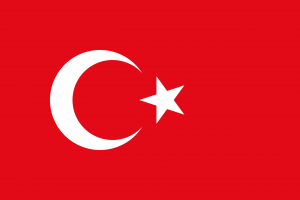Language/Turkish/Grammar/Plurals
Hi Turkish learners! 😊
In this lesson, we will talk about plurals in Turkish grammar. Plurals are an essential part of any language and allow us to communicate more effectively with others. By the end of this lesson, you will know how to form plurals in Turkish and use them correctly in sentences. So, let's dive in!
With the completion of this lesson, consider investigating these related pages: REİTERATİVE, Gender, The Accusative Case in Turkish & Indefinite Articles in Turkish.
What Are Plurals?[edit | edit source]
Before we jump into forming plurals in Turkish, let's start with the basics. A plural is a form of a word used to denote more than one person, animal, place, thing, or concept. For example, in English, the plural of "cat" is "cats," and the plural of "dog" is "dogs." In Turkish, plurals are formed in a different way than in English.
Plurals in Turkish[edit | edit source]
In Turkish grammar, plurals are formed by adding suffixes to nouns. The plural markers in Turkish vary depending on the last vowel of the noun stem. Here are the three broad categories of noun stems in Turkish:
- Nouns that end in any vowel other than “a” or “ı”
- Nouns that end in “a” or “ı”
- Nouns that end in any consonant
Let's look at each category with some examples:
Nouns that end in any vowel other than “a” or “ı”[edit | edit source]
When the noun stem ends with any vowel other than "a" or "ı," the plural suffix is "-lar." Here are some examples:
| Turkish | Pronunciation | English |
|---|---|---|
| Kitap | kee-tap | Book |
| Kitaplar | kee-tap-lar | Books |
| Gözlük | göz-lük | Glasses |
| Gözlükler | göz-lük-ler | Pairs of glasses |
As you can see, when the noun stem is "kitap" (book), we add "-lar" at the end to form the plural "kitaplar" (books). Similarly, when the noun stem is "gözlük" (glasses), we add "-ler" at the end to make it "gözlükler" (pairs of glasses).
Nouns that end in “a” or “ı”[edit | edit source]
When the noun stem ends with "a" or "ı," the plural suffix is "-lar" or "-ler," depending on vowel harmony. Here are some examples:
| Turkish | Pronunciation | English |
|---|---|---|
| Ev | ev | House |
| Evler | ev-ler | Houses |
| Kedi | keh-dee | Cat |
| Kediler | keh-dee-ler | Cats |
As you can see, the noun stem "ev" (house) ends with "e", but we still use "-ler" at the end to form the plural "evler" (houses). Similarly, when the noun stem is "kedi" (cat), we add "-ler" at the end to make it "kediler" (cats).
Nouns that end in any consonant[edit | edit source]
When the noun stem ends in any consonant other than "a" or "ı," the plural suffix is "-lar" or "-ler," depending on vowel harmony. Here are some examples:
| Turkish | Pronunciation | English |
|---|---|---|
| Araba | a-ra-ba | Car |
| Arabalar | a-ra-ba-lar | Cars |
| Kitapçı | kee-tap-chuh | Bookstore |
| Kitapçılar | kee-tap-chuh-lar | Bookstores |
As you can see, when the noun stem is "araba" (car), we add "-lar" at the end to form the plural "arabalar" (cars). Similarly, when the noun stem is "kitapçı" (bookstore), we add "-lar" at the end to form the plural "kitapçılar" (bookstores).
Exceptions[edit | edit source]
As with any language, Turkish has exceptions to the plural rules. Here are some common irregular nouns that don't follow the typical plural rules:
| Turkish | Pronunciation | English |
|---|---|---|
| Adam | a-dam | Man |
| Adamlar | a-dam-lar | Group of men |
| El | el | Hand |
| Eller | el-ler | Hands (pair) |
As you can see, the plural of "adam" (man) is "adamlar" (group of men), and the plural of "el" (hand) is "eller" (hands, pair).
Dialogue[edit | edit source]
Here's a dialogue to help you understand how to use plurals in Turkish:
- Person 1: Bugün markete gittim. (Today, I went to the market.)
- Person 2: Ne aldın? (What did you buy?)
- Person 1: Süt, ekmek, ve meyve aldım. (I bought milk, bread, and fruit.)
- Person 2: Hangi meyveleri? (Which fruits?)
- Person 1: Elma, portakal, ve muz. (Apples, oranges, and bananas.)
In this example, Person 1 uses plurals to describe the things she bought at the market.
Conclusion[edit | edit source]
Congratulations! You've now learned how to form plurals in Turkish grammar. Remember, plurals are essential to describe multiple items or individuals in any language, and Turkish is no exception. If you have any questions, don't hesitate to find native speakers and ask them any questions. You can also check out more Turkish language resources on Polyglot Club to improve your skills. 😎
Sources[edit | edit source]
- Forming plurals in Turkish | Turkish Basics
- Turkish Plural : Grammar rules and Exercises - Learn Turkish
- Turkish Plural Nouns - ielanguages.com
Upon wrapping up this lesson, take a look at these related pages: Present Tense, Complex Grammar, Present Continuous in Turkish & The Genitive Case in Turkish.
Videos[edit | edit source]
Turkish Grammar: 2-way Vowel Harmony And Forming Plurals ...[edit | edit source]
Turkish Grammar - Forming plurals in Turkish , -LAR, -LER - YouTube[edit | edit source]
Learn Turkish Grammar: Plural Suffix in Turkish - YouTube[edit | edit source]
Other Lessons[edit | edit source]
- Indefinite Articles in Turkish
- Interrogative Words in Turkish
- How to Use Be
- The Locative Case in Turkish
- How to use ¨to be¨ with adjectives in Turkish
- Adjectives
- Cardinal Numbers in Turkish
- Give your Opinion
- Possessive Case in Turkish
- The Dative Case in Turkish

